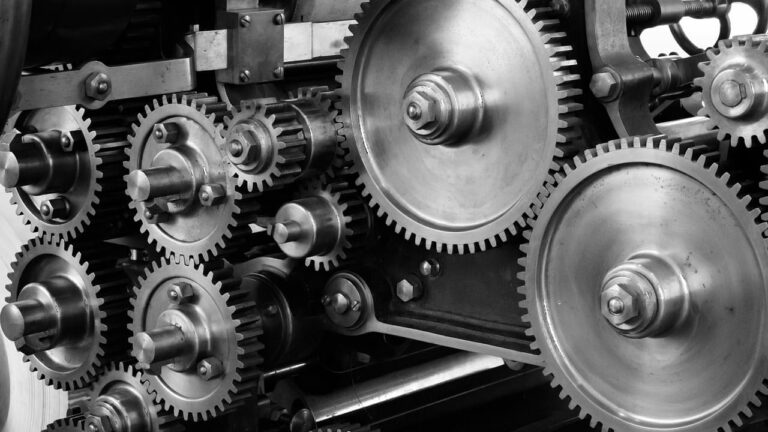Central banks have been successful in fighting inflation. Their hard work is bearing fruit—and it is benefitting all of us. Not only is inflation down, but something else is back, something we have been missing for way too long.
The positive real interest rate.
This rate is the difference between nominal interest rates and inflation. If I put $100 in the bank and get 3% interest over the next year, I get a positive rate if inflation is less than 3%; if inflation is more than 3%, my real interest rate is negative.
Positive rates encourage savings, while negative real rates encourage borrowing. Suppose I want to buy a motorcycle at some point in the future. I know that the price of the motorcycle will rise by inflation with each model year; if inflation is 2% and I get 3% in the bank, then by the time I go to buy that bike I will have more than enough money to do it in cash.
Suppose instead that interest rates are negative. Suppose the price of the bike rises by 3% per year but I only get 2% if on the same savings plan. It is now futile to try to save up for it, but if I can borrow money today, I can buy the bike now and pay it off over the next few years.
As long as my wage rises at least at a pace that is equal to the interest rate on the loan, I will be better off borrowing than saving money for the motorcycle.
The consequences of negative rates are more widespread than just household financial planning. When interest rates are negative, key incentives for corporate investments are skewed. The formation of capital—commercial real estate, computers, furniture, manufacturing equipment, transportation vehicles, and the like—does not reflect demand for the goods and services that the capital is intended to help produce. As a result, the economy as a whole builds excess capital, sometimes colloquially referred to as ‘overcapacity.’ This in turn leads to economic recessions.
A good example of overcapacity investments is the excess construction of high-end real estate. This was a pronounced problem behind the Great Recession 15 years ago; it is less of a problem today, but not an insignificant one.
In modern financial markets, overcapacity sometimes takes another form than excess investments in physical capital. When credit is cheap—as it is when interest rates are negative—it is easy for investors to build profitable portfolios in equity markets. The stock market is a classic example of this; with a rapid inflow of cheap money, so to speak, stock prices rise rapidly and give investors a sense of fast and safe portfolio return.
When stock values rise rapidly, they detach from the underlying economic activity that, in a stable economy, constitutes the stock value foundation. A speculative bubble opens up, the sustainability of which depends on a steady inflow of more investment capital. At some point, the inflow slows to a point where the speculative bubble bursts. At this point, the value of the stock that is in excess of its substantive value vanishes, often within days or even hours.
One of the safest ways to protect an economy against speculative bubbles is for the central bank to maintain positive interest rates. I am pleased to see that the nominal rates in both the U.S. economy and the euro zone exceed inflation. This has happened thanks to the fact that the Federal Reserve and the European Central Bank started raising interest rates in 2022 and did not stop until they had driven inflation down close to where it was before the inflationary episode began.
Figure 1 reports the rapid decline in inflation:
Figure 1
The decline in inflation correlates well with the rise in central bank interest rates, as reported in Figure 2:
Figure 2
While the Federal Reserve never dipped its federal funds rate below zero, the European Central Bank maintained its deposit facility—the main policy variable of its three interest rates—at half a percent below zero from June 2014 to July 2022.
Eight years is a long time for a central bank policy rate to be negative. The inflationary build-up from that period of monetary expansion resulted in the euro zone inflation peak above 10% reported in Figure 1. But it is also important to note that the inflationary difference between the Fed’s virtually zero interest rate and the ECB’s explicitly negative alternative is not very significant; the fact that the U.S. inflation rate peaked slightly below the Eurozone rate is likely more about dynamic differences between the two economies, than about the actual value of policy-setting interest rates.
As mentioned, the monetary tightening—reflected in rising interest rates—curbed inflation and ended the episode with negative interest rates. The transition into positive rates is illustrated in Figure 3:
Figure 3
Since early 2023, the U.S. economy has enjoyed a positive real interest rate based on the Federal Reserve’s funds rate of approximately 2%. Since it serves as a floor for market-based rates, this has established positive real return on savings for U.S. households—a situation they have not been used to since Donald Trump was president.
The euro zone entered positive rate territory late last year and has not quite seen the same stability. This is, however, a statistical mirage to some degree: the inflation rate for the euro zone as a whole is a weighted average of the 20 member states, among which inflation spans approximately a 3.5 percentage-point window. Therefore, some member states offer better real interest rates than others.
With positive real interest rates, savings become profitable while credit becomes less profitable. When interest rates exceed inflation, it pays for primarily consumers to build equity; there is less speculation in the real estate and stock markets, which means lower risk for financial bubbles and the kind of macroeconomic instability that we saw in the Great Recession in 2008-2010.
It bodes well for the future of both the U.S. and the euro zone economies that positive real interest rates have returned. The big question is how the Federal Reserve and the ECB are going to handle the markets for sovereign debt in the next economic downturn. However, that is a question we will have to return to when the time comes.






